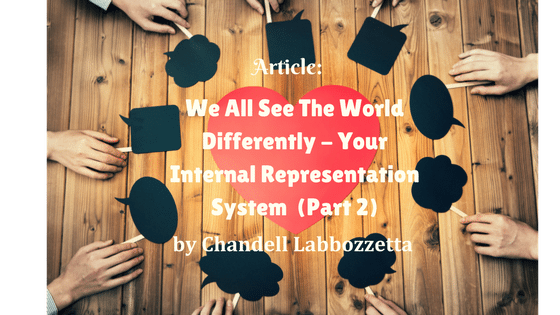#TuesdayTips
In my last post I talked about the importance of understanding how you see the world, and how other people see it in order to communicate with them effectively. Today I’m going to share some pointers which will help you identify what the internal representation system of another person is. If your offer is truly unique and compelling, or you have something that your prospect wants desperately enough then it won’t matter how you present it, but if there is any doubt in their mind then failing to pick up on their internal representation system, and to speak to it could be a deal-breaker.
As I mentioned, there are four primary internal representation systems: – Visual, Auditory, Kinaesthetic, and Auditory-digital.





